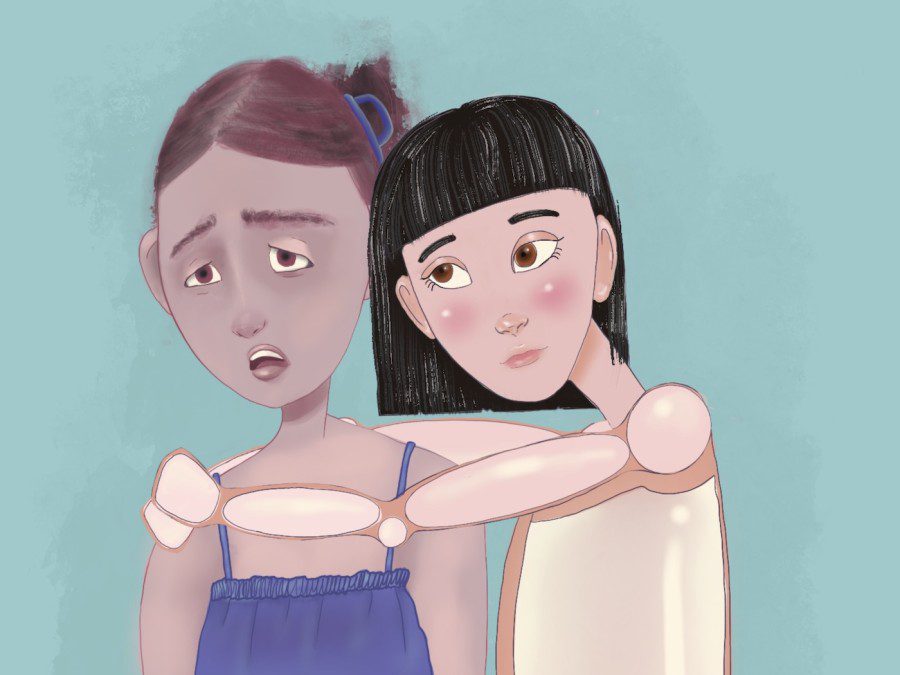Review: ‘Klara and the Sun’ examines humanity through the eyes of a machine
Kazuo Ishiguro’s eighth novel explores individuality and human complexity through the unique perspective of Klara, an artificially-intelligent robot.
‘Klara and the Sun’ is a dystopian science fiction novel written by Kazuo Ishiguro. (Illustration by Jenna Sharaf)
October 4, 2022
Kazuo Ishiguro’s novel “Klara and the Sun,” the NYU Reads selection for the class of 2026, centers Klara — a curious and observant robot companion built to cure children of their loneliness — and her experience learning about the world around her.
Through Klara’s point of view, Ishiguro places readers in a not-too-distant future where artificially-intelligent robots act as guardians of children. Dispatched to the countryside to care for the chronically ill 14-year-old Josie, Klara begins to experience life like a human. She takes in new sights and translates them into bubbling emotions.
Before being sent to live with Josie, curious Klara observes the world from a store window, waiting to be purchased by a passerby. From her observations, the world looks very much like the one that we view. But the longer Ishiguro spends describing her mundane fascinations, the more detached her observations become.
Through simple descriptions of ordinary people on the street and a machine that she believes is the cause of all pollution, Ishiguro captures the strangeness of everyday life in a series of bizarre observations.
As an Artificial Friend, or AF for short, Klara’s view of the world displays an inherent coldness. Despite her attempts to appear human, she cannot deny her robotic brain. She doesn’t have the same understanding of complex emotions and feelings that sometimes cloud human perceptions of reality. Ishiguro effectively builds a new worldview, one that both lacks and yearns for emotional resonance.
Using this new understanding of the world that minimizes the presence of emotion in perceiving, Ishiguro notes that it is that characteristic emotional filter through which people see the world that makes them so special. It’s not that everyone is innately unique; rather, a person’s perception of everyone else is informed by observation, and their varying emotional lenses craft an aura of singularity.
Assuming the perspective of Klara, Ishiguro uncovers a unique paradox; he argues that one must indulge in a lack of humanity in order to better understand human nature. The author cleverly recovers the majestic quality of simple moments that people often disregard and shines a light on what we as humans must do to better understand one another.
Klara’s journey becomes one of self-exploration. It asks: if we never felt loneliness, would we ever know what it feels like to connect with someone? Ishiguro displays that the negative feelings we face, albeit painful, make positive feelings all the more worthwhile and meaningful. The novel succeeds in demonstrating the power and effect that emotions can have on us and how every emotion is necessary in shaping who we are as human beings.
Josie growing older brings the importance of emotion further into perspective for Klara. As Josie ages, a rift opens between them, separating Klara from the person she was meant to care for. The AF realizes that she needs to find a new purpose in life and decides to spend the remainder of her days admiring the sun. She ultimately finds a place to rest while preparing for her “slow fade,” a term for dying that she coined.
As humans, we learn to grow with the world around us and continue to search for meaning and a place within society. It’s part of our nature to want to feel important and useful, so when our purpose changes, we strive to find a new one. Through “Klara and the Sun,” Ishiguro challenges us to find our purpose and continue searching for connections in our relationships — even though they might shift along the way.
Contact Rylee La Testa at [email protected]

























































































































































